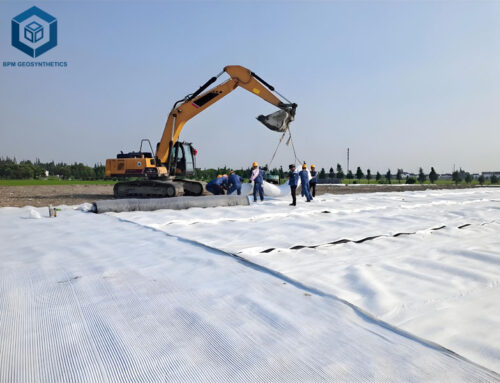Choosing the right non woven geotextile drainage fabric is crucial for ensuring effective water management and soil stability in various construction projects. Non-woven geotextiles are known for their permeability, durability, and versatility, making them ideal for applications such as road construction, landscaping, and sports field development. However, with the multitude of options available in the market, selecting the appropriate BPM Geotextile fabric can be a daunting task. This article will guide you through the key factors to consider when choosing the right non-woven geotextile drainage fabric, ensuring that your project benefits from optimal performance and longevity.
1. What Is Non Woven Geotextile Drainage Fabric?
Non-woven geotextile drainage fabric is a type of permeable material used in civil engineering and landscaping applications to manage water flow and enhance soil stability. Unlike traditional woven fabrics, which are created by interlacing threads, non-woven geotextiles are made through a process that involves bonding fibers together using methods such as needle-punching, heat bonding, or chemical treatments.
Key Characteristics:
- Permeability: Non-woven geotextiles allow water to pass through while preventing soil particles from clogging the fabric. This ensures efficient drainage and reduces the risk of water accumulation.
- Durability: These fabrics are designed to withstand harsh environmental conditions, including UV exposure, temperature fluctuations, and mechanical stresses. They offer long-term performance without degradation.
- Flexibility: Non-woven geotextiles are flexible and can conform to irregularly shaped surfaces, making them suitable for complex projects.
- Ease of Installation: Due to their lightweight and flexible nature, these fabrics are easy to handle and install, reducing labor costs and installation time.
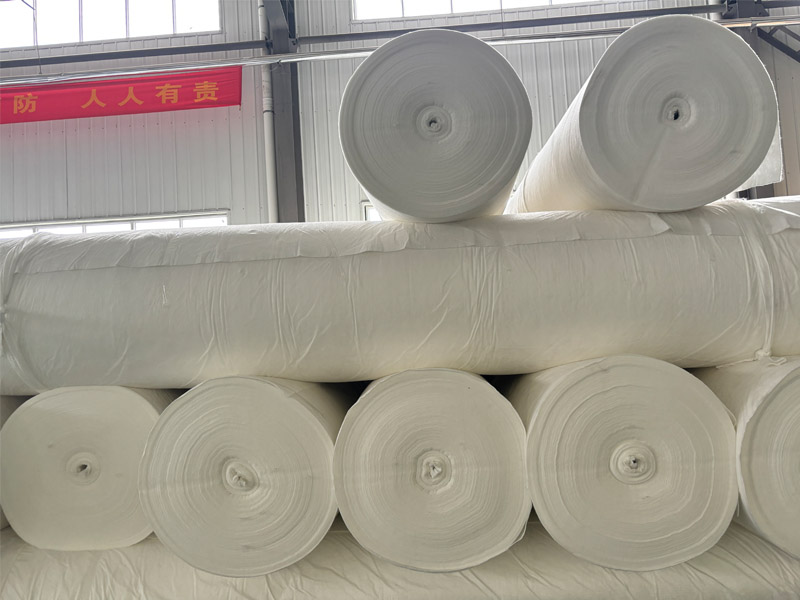
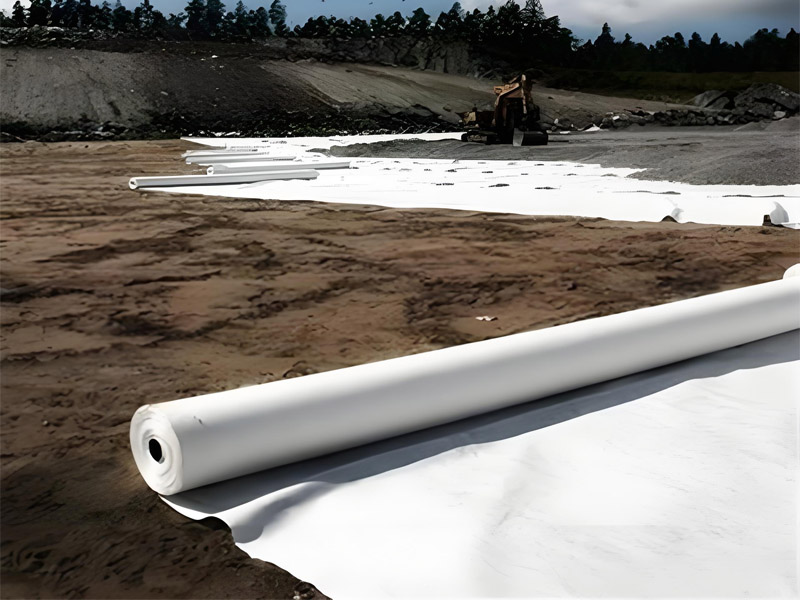
2. What Are Applications Of Non Woven Geotextile Drainage Fabric?
Non-woven geotextile drainage fabric is a versatile material that is widely used across various industries and applications because it has excellent filtration, separation, reinforcement, and drainage properties. Here are some of the key applications:
2.1 Non Woven Geotextile Drainage Fabric – Road Construction
- Base Stabilization: Non-woven geotextile fabric, placed beneath road base layers, prevents water infiltration. This action maintains the structural integrity of the road, thereby prolonging its lifespan.
- Sidewalks and Trails: Non-woven geotextile fabric is employed in pathways. It ensures proper drainage. Preventing water accumulation. Minimizing the risk of slips. Reducing erosion.
2.2 Non Woven Geotextile Drainage Fabric – Landscaping and Gardening
- Garden Beds: Placed at the bottom of garden beds to improve soil drainage and aeration, promoting healthier plant growth.
- Lawns and Turf Areas: Used beneath turf, non-woven geotextile fabric prevents waterlogging and ensures efficient water management.
2.3 Non Woven Geotextile Drainage Fabric – Erosion Control
- Slope Stabilization: Non-woven geotextile fabric, when deployed on slopes, controls erosion by filtering sediment and allowing water to drain away without carrying soil particles.
- Bank Protection: Installed along riverbanks and shorelines to reduce erosion caused by water flow and wave action.
2.4 Non Woven Geotextile Drainage Fabric – Retaining Walls
- Backfill Reinforcement: Non-woven geotextile fabric, when placed behind retaining walls, controls water pressure and reduces the likelihood of wall failure, thereby improving overall stability.
- Drainage Control: Helps manage water within the retained soil, preventing water accumulation behind the wall.
2.5 Non Woven Geotextile Drainage Fabric – Sports Field Construction
- Playing Surfaces: Non-woven geotextile fabric, when used beneath sports fields such as football, soccer, and golf courses, ensures proper field drainage, preventing waterlogging and maintaining an even playing surface.
- Track and Trail Surfaces: Applied in running tracks and trails to enhance durability and performance by managing moisture content.
2.6 Non Woven Geotextile Drainage Fabric – Construction Sites
- Temporary Roads: Non-woven geotextile fabric, when utilized in temporary access roads on construction sites, provides stable and durable surfaces capable of handling heavy equipment traffic while managing water flow.
- Foundation Drainage: Placed around building foundations to prevent water seepage and protect against hydrostatic pressure.
2.7 Waste Containment
- Landfill Sites: Non-woven geotextile fabric, when employed in landfill liners, separates waste from soil and serves as part of leachate collection systems. This ensures environmental protection and reduces the risk of contamination.
- Hazardous Waste Management: Used to contain hazardous materials and manage leachate, protecting surrounding soil and groundwater.
2.8 Agricultural Applications
- Irrigation Systems: Incorporated into irrigation systems to ensure uniform water distribution and prevent soil erosion.
- Pomace Collection: Used in vineyards and orchards to collect and manage pomace, improving vineyard cleanliness and reducing pest issues.
2.9 Environmental Projects
- Wetland Restoration: Non-woven geotextile fabric, when employed in wetland restoration projects, helps maintain water quality and supports vegetation growth by controlling sediment movement and improving drainage.
- Sediment Control: Used in construction and mining operations to trap sediments and prevent them from entering nearby water bodies.
3. How To Choose Right Non Woven Geotextile Drainage Fabric?
Choosing the right non-woven geotextile drainage fabric involves several key considerations to ensure it meets the specific requirements of your project. Here’s a guide to help you select the appropriate fabric:
3.1 Understand the Project Requirements
- Purpose: Identify the primary purpose of the geotextile (e.g., drainage, separation, filtration, reinforcement).
- Environment: Consider the environmental conditions where the fabric will be used (indoor/outdoor, soil type, water exposure).
3.2 Material Properties
- Permeability: Ensure the fabric has adequate permeability to allow water to pass through while filtering out soil and other particles.
- Durability: Look for high UV resistance and tear strength if the fabric will be exposed to sunlight or heavy use.
- Chemical Resistance: Choose a fabric resistant to any chemicals it might encounter in its environment.
3.3 Fabric Weight and Thickness
- Grammage: The weight of the fabric per square meter (gsm) affects its strength. It also affects durability. Heavier fabrics are generally more durable. They may be less permeable.
- Thickness: Consider the thickness based on the application. Thicker fabrics offer more protection. Protection against root penetration. Also, they provide protection against mechanical damage.
3.4 Filtration Efficiency
- Open Area: The percentage of open area in the fabric is key. It determines filtering capabilities. The fabric can filter out fine particles effectively. At the same time, it allows water to pass through.
- Particle Retention: Ensure the fabric can retain the desired soil particles without clogging.
3.5 Mechanical Strength
- Tensile Strength: Check the tensile strength in both machine and cross directions to ensure it can withstand loads.
- Tear Resistance: High tear resistance is crucial for applications involving heavy equipment or dynamic loads.
3.6 Installation Requirements
- Ease of Installation: Consider the ease with which the fabric can be cut, handled, and installed on-site.
- Compatibility with Other Materials: Ensure compatibility with other materials used in the project, such as soil, concrete, or asphalt.
3.7 Cost-Effectiveness
- Budget: Balance the cost with performance needs. Sometimes, higher-quality fabric costs more initially. However, it can lead to long-term savings. These savings come from reduced maintenance and replacement costs.
- Lifespan: Consider the expected lifespan of the fabric and compare it with the project’s duration.
3.8 Supplier Reputation
- Quality Assurance: Choose suppliers that provide quality assurance and certifications for their products.
- Support and Advice: Select suppliers who offer technical support and advice to help you choose the best product for your needs.
3.9 Compliance with Standards
- Regulations: Ensure the fabric complies. Compliance is necessary with relevant standards. These standards are for environmental projects. They are also for construction projects.
- Testing: Look for third-party testing reports that validate the fabric’s performance claims.
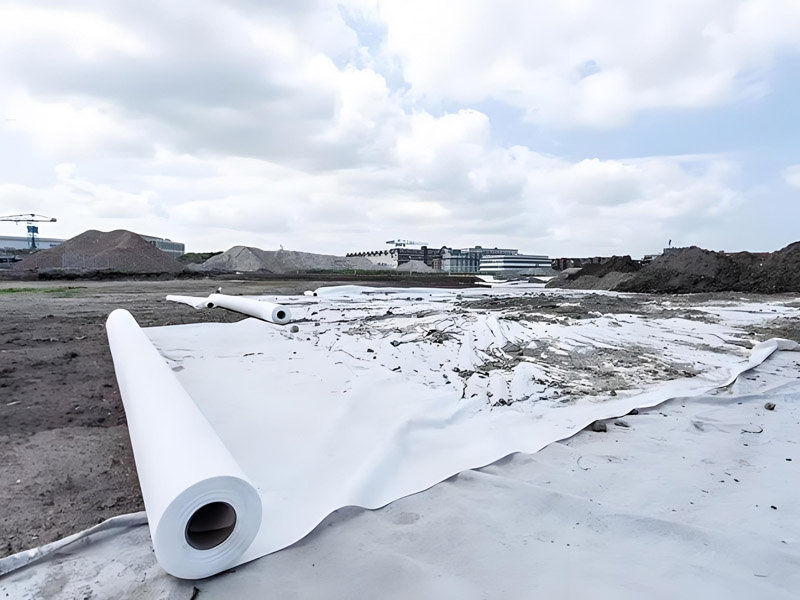
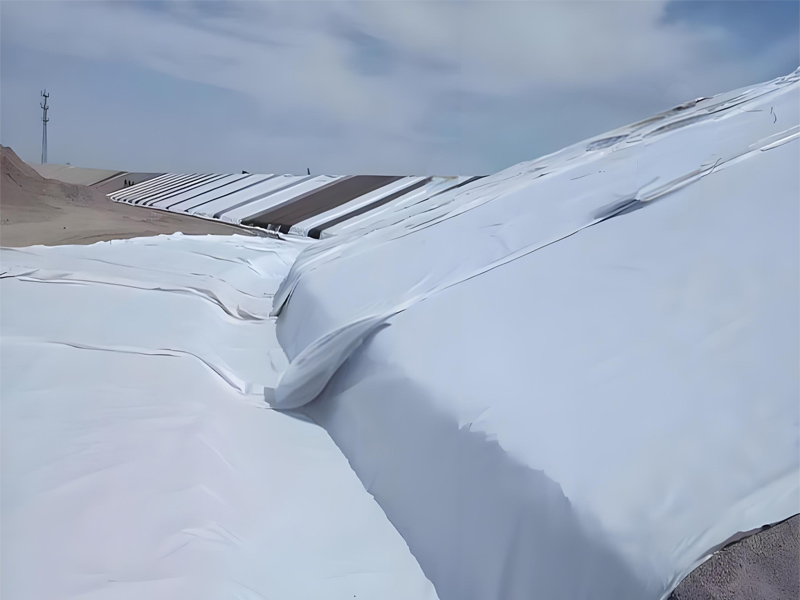
4. How To Lay Non Woven Geotextile Drainage Fabric?
Laying non-woven geotextile drainage fabric is a critical step in ensuring proper performance and longevity of your project. Here’s a guide on how to properly install non-woven geotextile drainage fabric:
4.1 Preparation
- Site Cleanup: Clear the area of debris, rocks, and other materials that could damage the fabric.
- Soil Grading: Ensure the soil surface is smooth, level, and well-compacted to provide a stable base for the fabric.
4.2 Unrolling the Fabric
- Unroll Carefully: Unroll the fabric gently to avoid wrinkles or folds. Start from one end of the area and work your way back, unrolling gradually.
- Overlap Edges: Overlap the edges of adjacent rolls by at least 30 cm (12 inches) to ensure continuous coverage and prevent gaps.
4.3 Cutting and Shaping
- Cut to Size: Use sharp scissors or a utility knife to cut the fabric to fit around curves, corners, or other irregular shapes.
- Smooth Edges: Ensure cuts are clean and smooth to avoid fraying, which can compromise the fabric’s performance.
4.4 Securing the Fabric
- Staple or Pin: Secure the fabric using landscape staples or pins every 30 cm (12 inches) along the edges. For steep slopes or areas exposed to high winds, use more frequent fasteners.
- Avoid Overstretching: Lay the fabric with minimal tension to allow it to conform naturally to the ground contours without stretching.
4.5 Layering
- Multiple Layers: If multiple layers are required, overlap subsequent layers in different directions (e.g., perpendicular) to enhance stability and performance.
- Proper Separation: Ensure there is an adequate separation between layers to maintain functionality.
4.6 Connection to Other Materials
- Edges and Joints: Properly connect the fabric to other materials (e.g., pipes, drains) using appropriate connectors or adhesives as needed.
- Seamless Joints: Ensure joints are seamless to prevent water from bypassing the fabric.
4.7 Final Checks
- Inspection: Walk over the installed fabric to inspect for any missed fasteners, wrinkles, or improper overlaps.
- Adjustments: Make any necessary adjustments to ensure the fabric lies flat and securely in place.
5. Summary
In conclusion, choosing the right non-woven geotextile drainage fabric is crucial for ensuring the success and longevity of your project. By considering factors such as material properties, fabric weight and thickness, filtration efficiency, mechanical strength, installation requirements, cost-effectiveness, supplier reputation, and compliance with standards, you can make an informed decision that meets your specific needs. Proper installation and maintenance further enhance the fabric’s performance, providing reliable and effective drainage solutions for your construction or environmental project.

